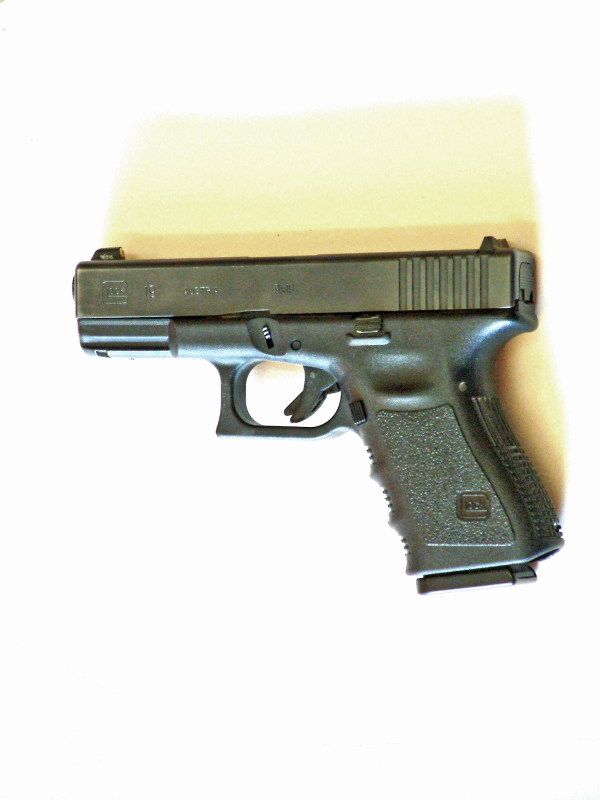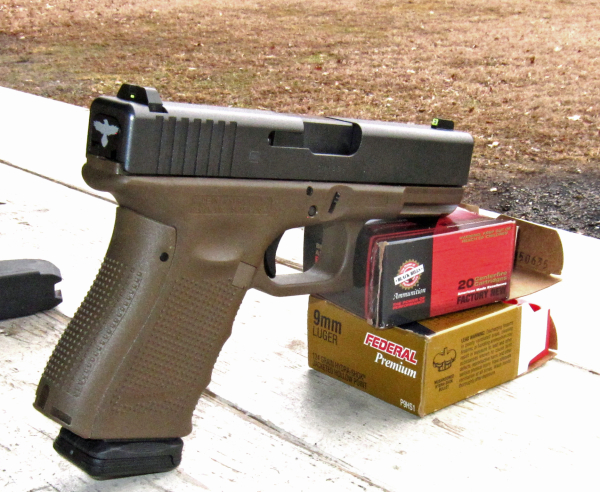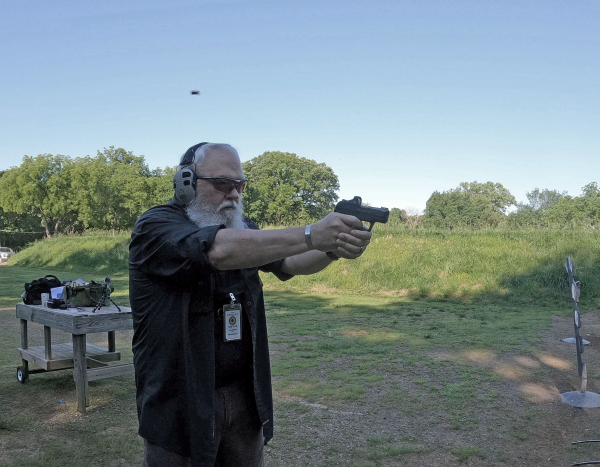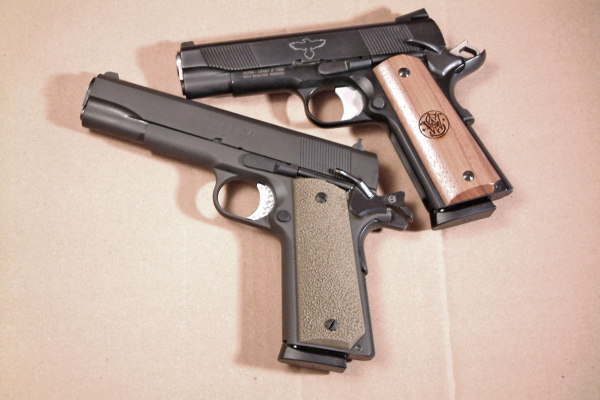Today’s feature is from correspondent Dave Spaulding.
Many years ago, while engaged in a private conversation in his home, the late Lt. Col. Jeff Cooper told me that the three primary features required when selecting a combat pistol were “reliability, high visibility sights and a good trigger”. It’s hard to dispute these and I consider them ironclad, but today I would add fit. The number of pistol models has grown considerably over the years and the gun must fit your hand if you are going to shoot to your potential.
Today, a pistol made by a reputable manufacturer will probably be as reliable as human design and engineering can allow. Yes, individual models might be problematic, but these lone samples should not reflect on the model line in its totality. In my classes, which occurred nearly every weekend and had between 16 and 24 students, 70 % of the guns were GLOCKs. Seldom do I see a problem with a GLOCK, even the ones that have been (in some cases highly) customized. When I do see GLOCK problems, it is usually due to weak springs installed in an attempt to make the trigger "better." The next 20% is the Smith & Wesson M&P or SIG P320 divided evenly, with the remaining 10% a smattering of all other pistols ... 1911's and HK VP-9's for the most part. All of these guns are "reliable" and run well.

High visibility sights would be the next requirement and this would be up to the shooter. While I was recently criticized by a high-profile instructor for saying "buy the sights you like, I stand by this statement/belief. I like my Ameriglo CAP Sights, which offers a square in a square with a bright colored front sight, while others prefer thin, black on black sights like those designed by Kyle Defoor.

The Ameriglo Hackathorn Sight and the Trijicon High Visibility sight are quite popular and for good reason...they work! I also have a strong affinity for the sights designed and made by Richard Heinie and they are my personal choice for all my 1911’s. I have seen many students do good work with the XS Big and Small dot sights...I really don't care as long as you can hit what you are shooting at from contact distance to 25 yards. Being able to truly SEE the sights is a big plus! Let me be clear … any sight system can work if you can see it!

The current popularity of Mini Red Dot Sights (MRDS) for pistols has added another choice to the process of selecting sights for your combat pistol. As I have stated elsewhere, I have “gone over to the dot side” and hope all of the Star Wars fans out there will forgive me. Expect to spend time working with them…say 1,000 rounds or so…as like all things, there is a learning curve. The great thing...in case you missed it...is there are a large number of sight configurations to choose from so do your homework and choose wisely.
A "good trigger”. This is where many become confused, as a good trigger is not the same as a light trigger. A good trigger is one that can be depressed smoothly to the rear without glitches, snags and catches in the action. Having a smooth trigger helps keep the hand from sympathetically clenching when trying to depress it which will take the muzzle off target. It’s been called “late grip effect”, “convulsive grip” and “sympathetic grip” but it’s all the same thing - movement of the lower fingers as you try to independently use the index finger. Keep in mind 1/16th inch of muzzle movement is 4 inches at 20 feet, so the importance of reducing this effect cannot be understated. In the end having a smooth trigger is critical! Please remember the hand works as a team, with four fingers opposing a thumb, while the thumb and index finger are also “hard wired” to work together. Isolation of the index finger is certainly possible, but is difficult to do when you ask it to apply pressure individually…the rest of the fingers WILL want to help! Compression of the pinky finger can really move the muzzle…remember the pistol is a lever and what is done at one end will move the other.
When I was still carrying a revolver on duty, it was quite common to have an action job performed, as most revolver actions were atrocious from the factory. Consider all of the moving parts that engage and interact in a revolver…to cock the hammer and rotate the cylinder…most revolver triggers felt like one snag or catch after another. A good action job did not lighten the trigger, it smoothed out all of the engagement surfaces so the trigger could be “rolled” to the rear without taking the muzzle off target. Revolver actions that were nothing more than “clipping coils” off the hammer spring resulted in an unreliable weapon, which violates the first requirement listed here. This is not good.
Pistol actions should seek the same end result…a smooth pressing to the rear, not a light trigger. The popular GLOCK has the famous “catch” in the trigger action that occurs when the tail end of the trigger bar engages the connector shelf, which pulls the trigger bar down to release the striker. If you think about it, the GLOCK is just a big slingshot - pull back, let go! I sure wish I had thought of it. It is this simplicity that makes the gun so popular.
The 3.5 connector was created to offer a less severe angle to this shelf to help reduce this glitch or catch, but it also lightens the overall trigger weight which concerns some. Trigger weight can easily be added by increasing the weight of the trigger and striker springs. In addition, polishing the engagement surfaces of the internal parts on a GLOCK can smooth the action but make sure you don’t round the edges, which can make the gun unreliable. Sharp edges of the trigger components are required to properly engage one another and perform their function(s). When in doubt, let a qualified gunsmith do the job.

The 1911’s are the easiest pistols to shoot as far as the index finger is concerned. The trigger action is short and slides straight to the rear versus most other pistol designs, which pivot from the top. The downside of the 1911 is the additional safety levers that must be engaged and disengaged during operation, which makes the gun unpopular in some circles. As far as double action pistols are concerned, I have shot 8, 10 even 12-pound pistol triggers that were smooth and worked quite well. Ernest Langdon of Langdon Tactical, performed an action job on my Beretta 92FC and turned that gun into a pistol that was VERY easy to shoot!
When I think of the word “fit” as it relates to the handgun, I picture the pistol fitting square into the web of the hand (along the bones of the forearm) and the index finger engaging the trigger with proper “geometry”…placement of the pad to first knuckle square on the trigger face without having to stretch out to reach it. At the same time, not having too much finger sticking through to the opposing side of the gun as both conditions will affect a shooter’s ability to depress the trigger straight to the rear without muzzle movement. Folks with large hands can easily find a pistol that will properly fit… it’s those of us (like me!) who have small hands or short fingers that struggle. A pistol with a single column grip can help, but I, for one, like the added capacity of a double column handgun. Having to reload in a gunfight is a complex task and adding a thin single column magazine/magazine well just adds to this complexity. In my mind, more bullets are certainly better.
Changing the grip…something that was done with boring regularity on revolvers…can help and having pistols with interchangeable back straps has been a real Godsend for many. Being able to reduce the grip and length of reach around the grip tang helps achieve the proper finger geometry. GLOCK has been the real challenge and while the reduced grip of the 5th generation gun has helped, it is the after-market grip reduction…first undertaken by Robbie Barrkman of Robar…that has made the GLOCK a more “shoot-able” pistol for many. Legal experts seem to agree changing the grip on any gun is OK; so to struggle with a too large grip is just silly.
What I would like to see is the incorporation of more reduced or short reach triggers by the manufacturers. Triggers that are actually curved or reconfigured to reduce the reach around the grip tang by the index finger for enhanced placement. SIG used to offer a short reach trigger for their original P-226 and 228 pistols and I have one on my P-228…it really helps! Many after-market triggers for the GLOCK and other striker-fired triggers are now offered with flat face triggers which does help many shooters with proper trigger finger geometry.
There you have it: reliability, high visibility sights, good trigger and proper fit…if you shop well and achieve all of these you will likely have a combat handgun you can count on to save your life! Of course, training and practice are JUST AS IMPORTANT as selecting the gun. Thus, choose wisely and train hard.
Dave Spaulding is a professional firearms instructor with 36 years' experience in law enforcement and federal security. The recipient of the 2010 Law Enforcement Trainer of the Year Award from the International Law Enforcement Training and Educators Association, Dave has worked in all facets of law enforcement including communications, corrections, court security, patrol, evidence collection, training and investigations. He was a founding member of his agency’s SWAT Team and acted as its training officer for 8 years. He spent a year in an undercover capacity and was the commander of a multi-jurisdictional narcotics task force, has been an adjunct instructor at the former Heckler & Koch International Training Division and the Tactical Defense Institute. In addition to his many published articles (over 1,400), Dave is the author of two acclaimed books, Defensive Living and Handgun Combatives. He operated his own training company with focus on “the combative application of the handgun” www.handguncombatives.com.